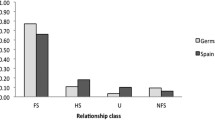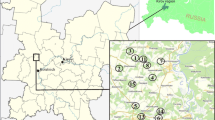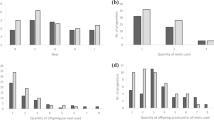Abstract
We investigated parentage using multilocus DNA fingerprinting for 222 juveniles produced during 99 group-years in the bicolored wren Campylorhynchus griseus, a cooperatively breeding bird of the Venezuelan savanna. Young adult bicolored wrens (auxiliaries) remain in their natal territories and substantially enhance the production of young there. We have previously used behavioral indicators of dominance by a single male/female pair (principals) to infer breeding status, resulting in the commonly applied model of helping in which current fitness accrues to auxiliaries only indirectly, in proportion to their relatedness to the principals and the effect of their assistance on breeding success. Our parentage analysis has demonstrated that 8.6% of the juveniles found on territories were not produced by the principal pair. Parentage of 4.1% of the juveniles was completely outside the social group; these appear to result from early dispersal of juveniles rather than from brood parasitism, most likely resulting from breakup of nearby groups. Principal females mated outside of their group (2.3%), or with an auxiliary male (2.3%), in the remaining cases of parentage outside the principal pair. No matings were detected between close relatives (e.g. mother-son); matings detected between the principal female and an auxiliary male followed a typical replacement of the principal female by an unrelated immigrant female. Our finger-printing results indicate that: (1) current fitness benefits accruing to most auxiliaries do not exceed their likely reproductive success had they dispersed successfully to a breeding position; (2) nearly all wren mating is monogamous and (3) behavioral dominants (especially females) can monopolize breeding.
Similar content being viewed by others
Author information
Authors and Affiliations
Additional information
Received: 23 September 1994/Accepted after revision: 10 June 1995
Rights and permissions
About this article
Cite this article
Haydock, J., Parker, P. & Rabenold, K. Extra-pair paternity uncommon in the cooperatively breeding bicolored wren. Behav Ecol Sociobiol 38, 1–16 (1996). https://doi.org/10.1007/s002650050211
Issue Date:
DOI: https://doi.org/10.1007/s002650050211




